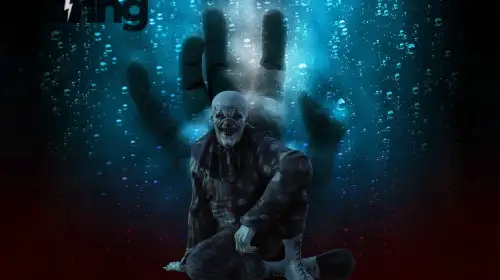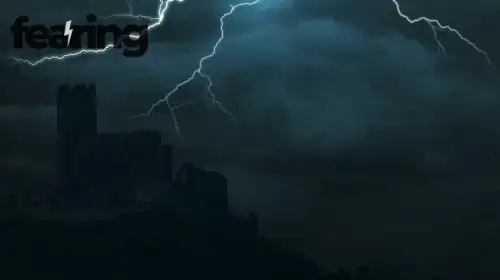Horror Art and Music have always been mirrors of our collective fears. From Gothic paintings to haunting film scores, they remind us that terror can be beautiful when filtered through creativity. Artists and composers have long transformed nightmares into works that make us feel, think, and shiver — sometimes all at once.
As filmmaker Guillermo del Toro once said, “Monsters are the patron saints of our blissful imperfections.” Horror isn’t just about shock — it’s about revealing what lies beneath comfort.
The Art of Fear
Visual horror began long before cinema. Medieval painters depicted demons and hellscapes to warn believers of moral decay. The Baroque and Romantic eras introduced beauty to the grotesque, showing that fear could coexist with elegance.
Art historian Dr. Evelyn Chase notes, “Horror in art wasn’t born from evil — it was born from curiosity. It asks: what happens when beauty stops pretending to be safe?”
Modern horror art continues that legacy through surrealism, digital illustration, and installation pieces that make viewers confront discomfort directly.
Famous Horror Paintings That Still Haunt Viewers
| Artwork | Artist | Year | What Makes It Disturbing |
|---|---|---|---|
| Saturn Devouring His Son | Francisco Goya | 1823 | Cannibalism as divine punishment |
| The Nightmare | Henry Fuseli | 1781 | The birth of erotic horror |
| The Scream | Edvard Munch | 1893 | Pure anxiety turned into soundless terror |
| Study after Velázquez's Pope Innocent X | Francis Bacon | 1953 | A scream trapped in stillness |
| The Temptation of St. Anthony | Hieronymus Bosch | 1501 | Chaos, temptation, and divine madness |
Each of these works captures psychological horror — not monsters, but moments when sanity wavers.
Horror in Modern Visual Culture
Contemporary artists continue to explore fear through photography, digital media, and sculpture. The rise of horror exhibitions and immersive experiences like Meow Wolf or The Museum of Death has brought terror into mainstream galleries.
Painter Zdzisław Beksiński is often considered the modern godfather of horror art, with surreal post-apocalyptic landscapes and faceless beings. He famously said, “I never paint dreams or nightmares — I paint my own reality.”
Photographers like Joshua Hoffine use cinematic lighting to recreate childhood fears — monsters under the bed, shadows behind curtains — making terror nostalgic.
Digital artist Alex Pardee blends bright colors with grotesque forms, proving that horror can be pop culture, not just darkness.
The Sound of Dread
If horror art is visual fear, horror music is emotional fear. A single note, played slowly or distorted, can turn calm into chaos.
Composer Bernard Herrmann revolutionized the genre with his shrieking violin score for Psycho (1960), redefining what sound could do to nerves. Later, John Carpenter created minimalist synth tracks that made Halloween unforgettable.
According to musicologist Dr. Helen Fisher, “Horror music works by breaking musical expectations. When rhythm or harmony collapses, the brain fills the void with danger.”
Iconic Horror Music That Changed the Genre
| Composition | Creator | Year | Why It Works |
|---|---|---|---|
| Psycho Theme | Bernard Herrmann | 1960 | Violins as knife blades |
| Tubular Bells (The Exorcist) | Mike Oldfield | 1973 | Innocence turned eerie |
| Halloween Theme | John Carpenter | 1978 | Simplicity amplifying dread |
| The Shining Soundtrack | Wendy Carlos | 1980 | Classical music warped into tension |
| Suspiria Score | Goblin | 1977 | Experimental rock meets witchcraft atmosphere |
Film composers discovered that silence, dissonance, and irregular rhythm trigger primal fear faster than loudness ever could.
When Art and Music Collide
Horror thrives at the intersection of sight and sound. Installations that combine both can produce overwhelming emotional responses.
In 2024, Berlin’s House of Echoes exhibit allowed visitors to walk through sound-reactive horror visuals — paintings that screamed when approached. It attracted over 300,000 attendees in six months, proving the commercial power of fear as art.
Composer Akira Yamaoka, known for his Silent Hill video game scores, once explained, “Horror music doesn’t tell you what’s scary — it tells you when to be scared.” His work combined industrial noise with melancholic melody, showing that sadness and terror are siblings.
Why Horror Art and Music Comfort Us
Despite their dark themes, these forms often bring catharsis. They let audiences explore death, chaos, and loss in ways that feel controlled. The process is paradoxically healing.
Psychologist Dr. Chris French observes, “When people engage with horror art or music, they safely test their limits. It’s fear therapy wrapped in creativity.”
Fans describe horror soundtracks as “hauntingly beautiful” — emotions distilled into dissonance. Horror paintings, meanwhile, invite introspection, asking us why we flinch from our own reflections.
The Evolution of Fear in Art and Music
19th Century: Moral fear and religious symbolism
20th Century: Psychological dread and surrealism
21st Century: Technology-driven and emotional horror
Future: AI-generated art that personalizes fear to each viewer
AI artists like Refik Anadol already use neural data to create moving, morphing horror visuals that react to real-time emotions. The line between audience and artwork is fading.
Music is also evolving. Algorithms can now detect anxiety patterns and compose horror tracks tailored to heart rate and brain activity.
Composer Lena Ortiz warns, “The next haunted symphony won’t be written — it will learn you.”
Why Fear Will Always Inspire Art
Ultimately, horror art and music endure because they turn chaos into comprehension. They translate emotion into form. They remind us that beauty and terror often come from the same spark of creation.
Writer Clive Barker once said, “There’s a kind of love in horror — a love of life strong enough to acknowledge its darkness.”
And that’s the paradox that keeps us returning — the haunting realization that we can find beauty even in our deepest fears.
FAQ
Q1: Why do people enjoy horror art and music?
A1: They provide emotional release and let us confront fear safely through creativity.
Q2: Who are some famous horror artists?
A2: Francisco Goya, Zdzisław Beksiński, Alex Pardee, and Francis Bacon are among the most influential.
Q3: What makes horror music effective?
A3: Dissonance, irregular timing, silence, and low frequencies activate primal fear responses.
Q4: Can horror art be therapeutic?
A4: Yes. It can help people process trauma, anxiety, and complex emotions through symbolic expression.
Q5: What’s next for horror in art and music?
A5: AI-driven experiences that personalize visual and auditory fear, merging science with imagination.
Sources
Cultural Analytics Journal 2025
World Travel Market Report 2025
New Scientist – The Neuroscience of Fear

